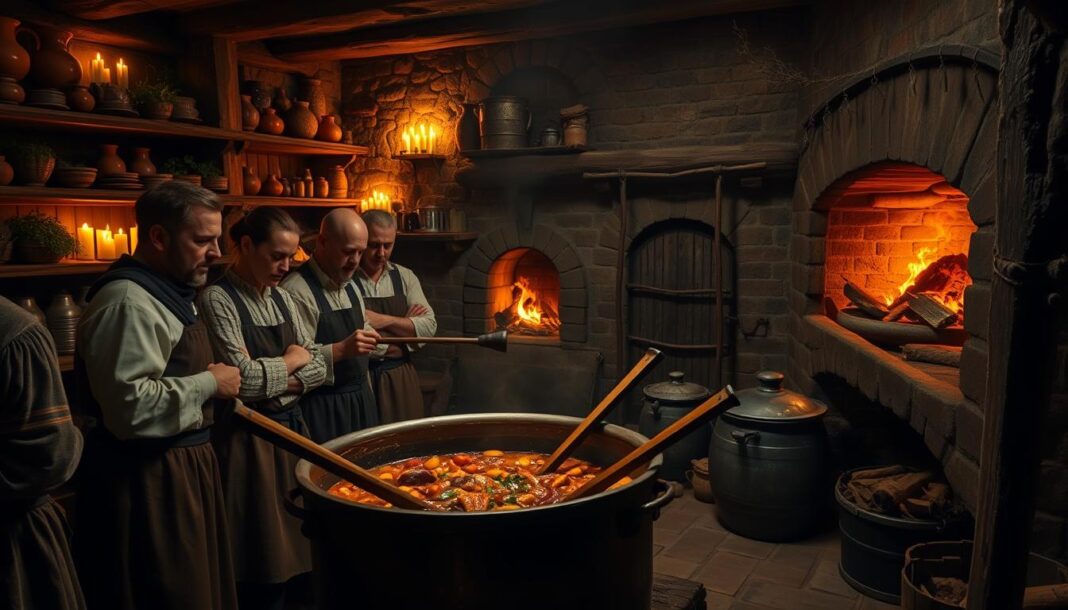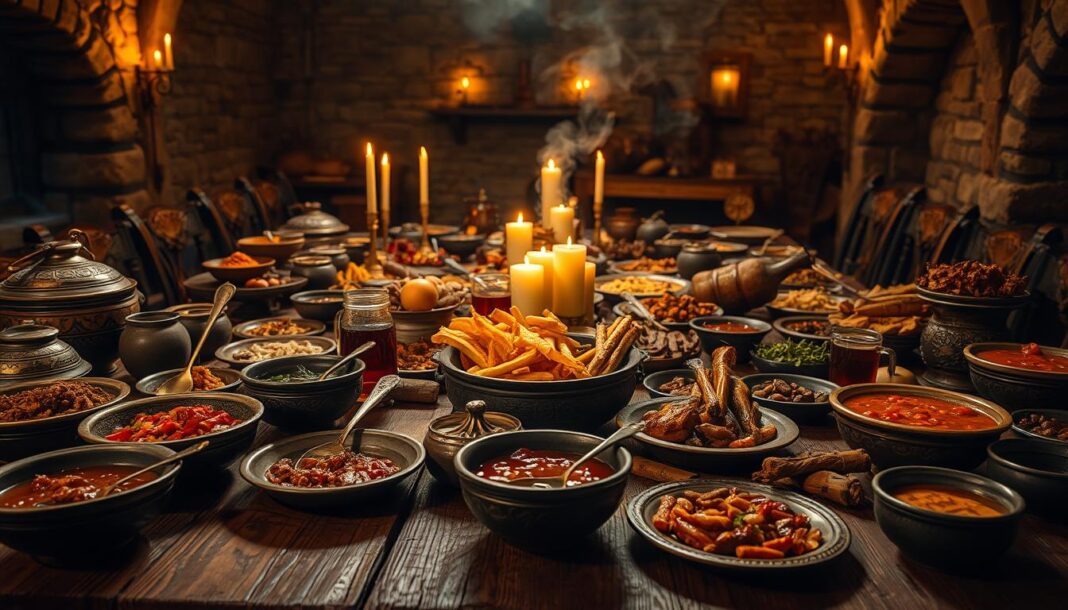At Historical Foods, we’ve spent months researching and testing authentic medieval cooking methods to bring you the most accurate and delicious historical recipes available today. Our journey through medieval culinary traditions has revealed that soups and stews were staple dishes that provided sustenance through harsh winters and utilized seasonal ingredients available to people of various social classes.
Through careful testing in both modern kitchens and over open fires, we’ve discovered that cooking methods like slow simmering and the strategic addition of herbs and available spices, such as thyme, can develop surprisingly deep flavors despite relatively simple ingredient lists. Many historical recipes don’t specify exact measurements or cooking time, so we’ve documented our testing process to provide you with reliable instructions.
Key Takeaways
- Authentic medieval cooking methods tested and adapted for modern kitchens.
- Use of local and seasonal ingredients in traditional soup and stew recipes.
- Importance of cooking techniques like slow simmering for flavor development.
- Role of spices and herbs in enhancing flavor and perceived medicinal properties.
- Adaptation of historical cooking methods for both peasant-style and noble household dishes.
- Impact of cooking vessels and heat sources on flavor development.
The Art of Medieval Cooking
By delving into medieval cooking, we uncover not just recipes, but a way of life that emphasizes local ingredients and communal dining. Medieval cooking techniques, though ancient, hold secrets to creating rich and satisfying stew recipes.
Historical Ingredients and Cooking Techniques
Medieval cooking relied heavily on locally sourced ingredients and simple yet effective techniques. We found that by using a combination of historical ingredients and traditional methods, we could recreate soup and stew recipes that were both flavorful and nourishing. The use of spices was minimal, yet the resulting broth was rich and satisfying.
Why We Recreated These Recipes
We embarked on recreating these medieval recipes to bridge the gap between academic food history and practical cooking. Our process involved testing these recipes in modern kitchens and at historical reenactment events, gaining insights into how medieval techniques can be adapted for contemporary use. We discovered that many medieval soups develop complex flavors over time, making them a great dish to cook and enjoy.

Authentic Medieval Soup Recipes
Medieval soup recipes, tested in both modern and historical contexts, provide a fascinating look at traditional cooking methods. Our collection includes a variety of soups that showcase the resourcefulness of medieval cooks.
The Root Vegetable Soup, featuring smoked bacon, root parsley, carrots, and yellow beet, demonstrates how simple ingredients can create remarkable depth of flavor. In contrast, the Medieval Chicken Soup with Eggs and Spices represents a more refined dish, served in wealthy households, and valued for its flavor and medicinal properties.
We’ve tested each recipe multiple times, both over open fires and in modern kitchens, to provide accurate cooking times and techniques. For instance, our Medieval Vegetable Stew with Pork showcases how preserved meat, seasonal vegetables, and grains like barley were used to sustain workers through long days. The cooking water from salted pork often provides sufficient seasoning, eliminating the need for additional salt.
These soups improve with time, making them excellent make-ahead dishes. We’ve included serving suggestions based on historical evidence, such as pairing soups with coarse bread or fish. By following our instructions, you can recreate these authentic medieval soups and experience the cuisine of the past.
Our testing confirmed that using thyme and other herbs not only added flavor but also served medicinal purposes, reflecting the medieval understanding of health and cuisine. Whether you’re a culinary historian or a home cook, these recipes offer a unique culinary journey through the medieval period.


